 |
 |
 |
| |
Can the UNAIDS 90-90-90 target be achieved? Analysis of 12 national level HIV treatment cascades
|
| |
| |
Download the PDF here
Reported by Jules Levin
IAS 2015 Vancouver July 19-23
Presented by Jacob Levi
J. Levi1, A. Raymond1, A. Pozniak2, P. Vernazza3, P. Kohler3, A. Hill2
1Imperial College London, School of Public Health, London, United Kingdom, 2St. Stephens Centre, Chelsea and Westminster Hospital, London, United Kingdom, 3Cantonal Hospital of St. Gallen, Division of Infectious Diseases and Hospital Epidemiology, St. Gallen, Switzerland
WEBCAST: https://www.youtube.com/watch?v=smqPzaj5jiw
Program Abstract
Background: In 2014, UNAIDS set the "90-90-90" targets; aiming to diagnose 90% of all HIV positive people, provide antiretroviral therapy for 90% of those diagnosed and achieve undetectable HIV RNA for 90% of those on treatment by 2020. This translates to at least 73% of all HIV positive people achieving undetectable HIV RNA. Comparing national level HIV treatment cascades, we evaluate how far countries are towards achieving these targets.
Methods: We compared published estimates of HIV treatment cascades across 12 countries and one region. Data were selected based on reliable, generalizable, recently published results from large cross-sectional and longitudinal study cohorts. Cascades were split into six stages; 1-Total HIV positive people, 2-Diagnosed as HIV positive, 3-Linked to care, 4-Retained in care, 5-On antiretroviral treatment, 6-Undetectable HIV-RNA. Each cascade was analysed to identify ''breakpoints'': defined as a drop >10% in coverage of care between consecutive 90-90-90 UNAIDS stages.
Results: The percentage of HIV positive people whom achieved undetectable HIV RNA ranged from 68% [Switzerland] to 9% [Russia]. No cascade analysed met the UNAIDS final target of 73% achieving undetectable HIV RNA. Cascades were heterogeneity as reporting methodology and stage definitions varied between countries e.g. definitions of viral suppression ranged from < 50 - < 1000 RNA copies/ml. While five Western European countries achieved >50% undetectable HIV RNA, three Eastern European countries achieved < 20% undetectable HIV RNA. The most significant breakpoints in treatment cascades were at diagnosis (for Switzerland, UK, Netherlands, sub-Saharan Africa, and Russia) receiving Antiretroviral Therapy (for Australia, Brazil, USA, Georgia and Estonia) and achieving undetectable HIV RNA (France and Canada).

Conclusions: No country or region analysed met the UNAIDS 90-90-90 coverage target of 73% of HIV positive people achieving undetectable HIV RNA. Large disparities were identified between countries, even within Europe. In order to facilitate comparisons between countries and to better identify gaps and inform policy, a standardized reporting method should be implemented.
------------------
In conclusion,
No country yet meets the final UNAIDS target of 73% achieving viral suppression.
This is the most important category for achieving individual good health but also reducing transmission and ending the epidemic.
Large disparities exist, especially between western and eastern Europe.
Although all cascades are constructed from the most reliable and largest available national data sources, comparison between countries is difficult because of high heterogeneity in reporting methods and definitions of stages between countries.
In 2020 the UNAIDS targets will increase from 90% to 95% for each of the three categories as a fast-track to end the epidemic by 2030.
Currently diagnosis remains the largest breakpoint globally and therefore we need to focus on testing.
Identifying breakpoints allows us to prioritize resources to fix them.
We conclude that to measure progress annually and facilitate comparison between countries, which is extremely important to ending the epidemic, a standardized reporting methodology should be implemented.



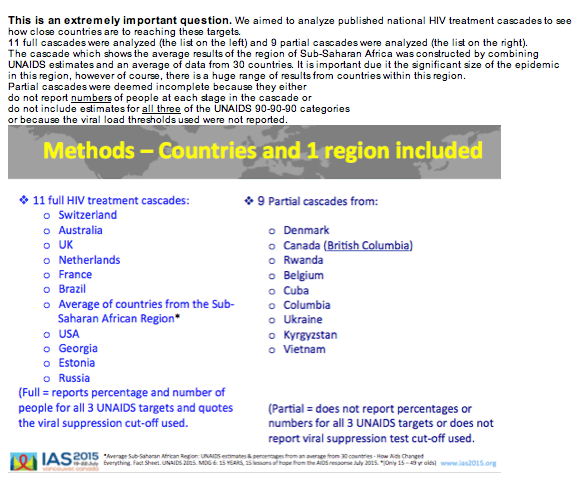

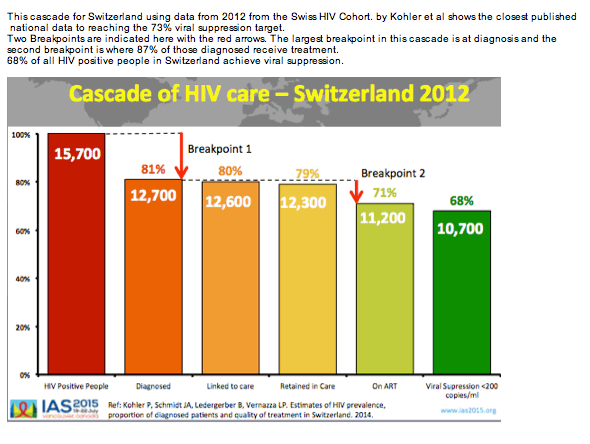
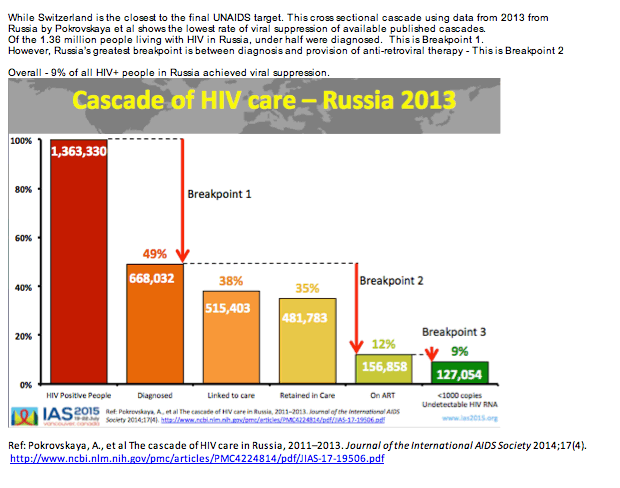
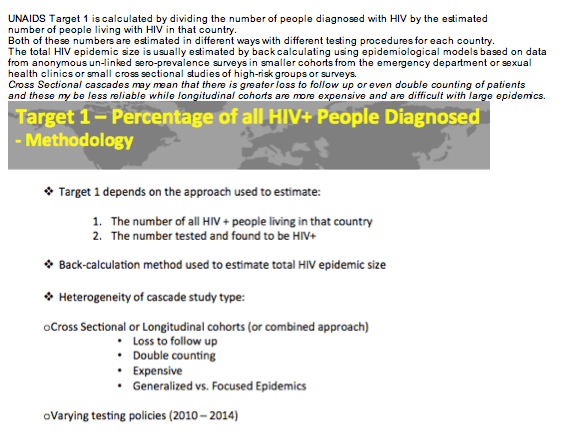

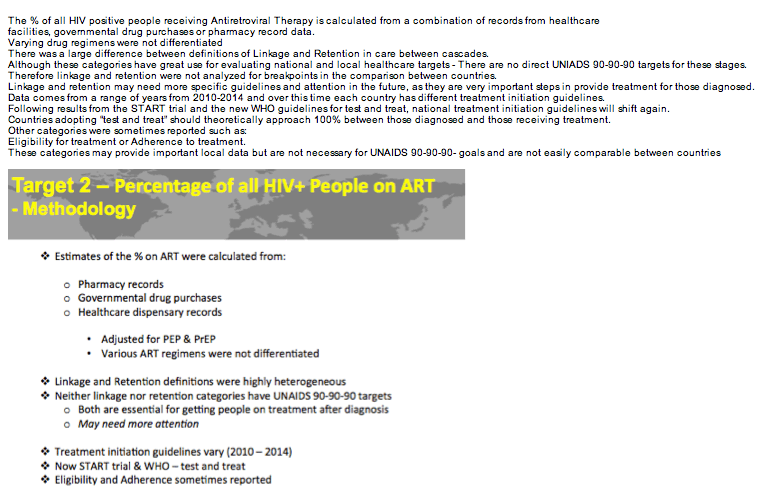
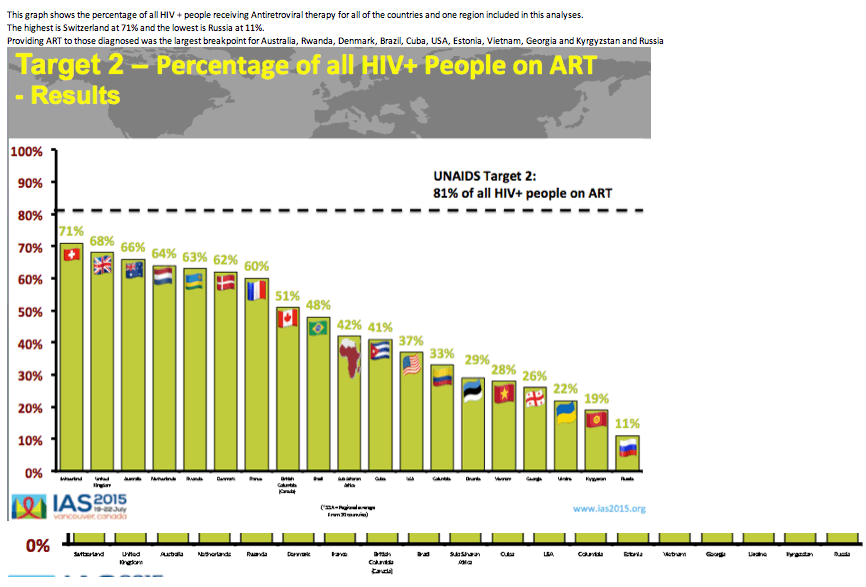
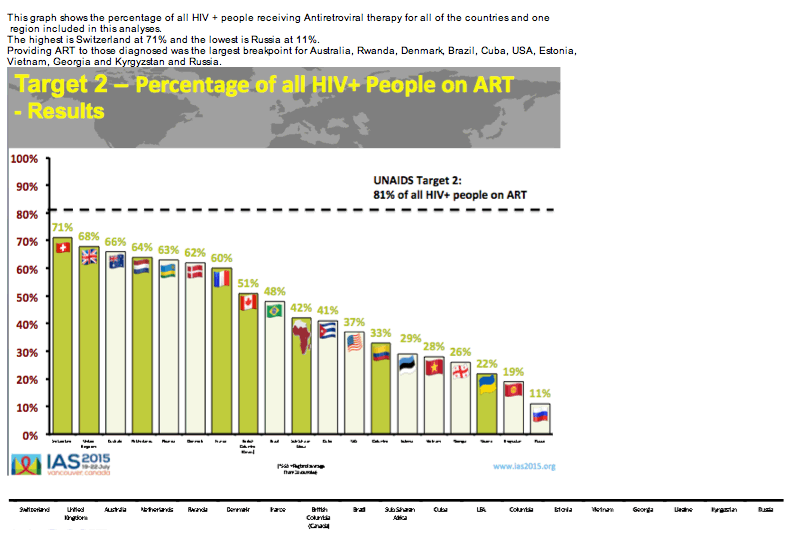
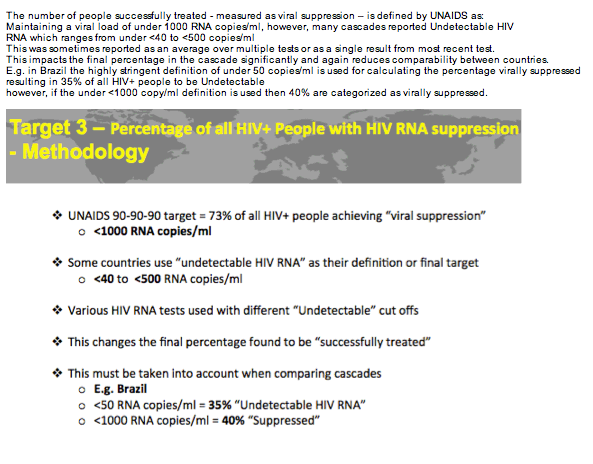
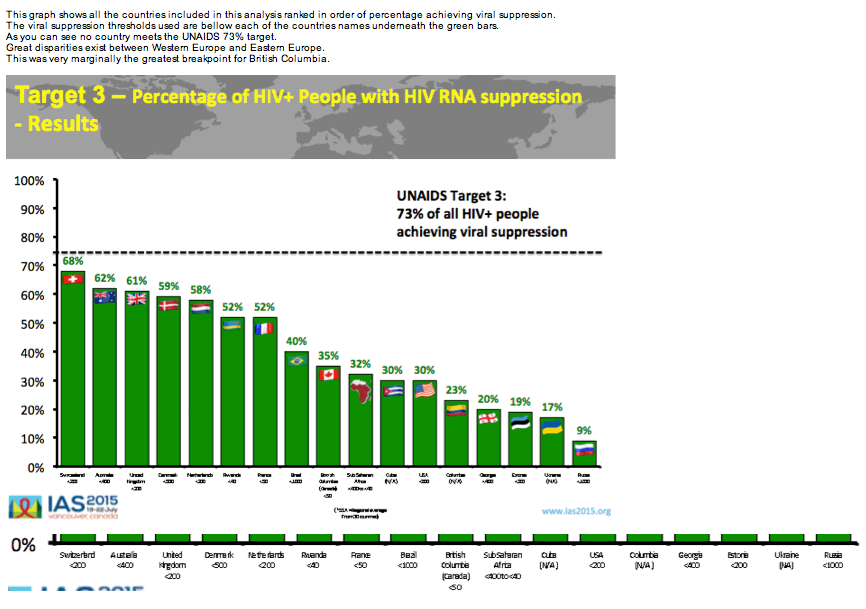
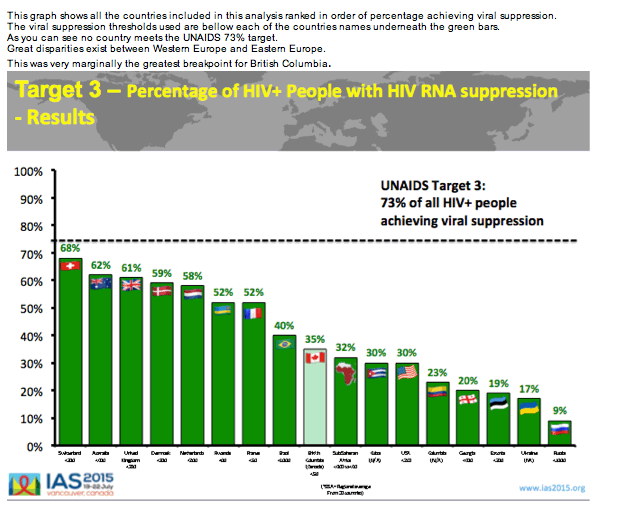

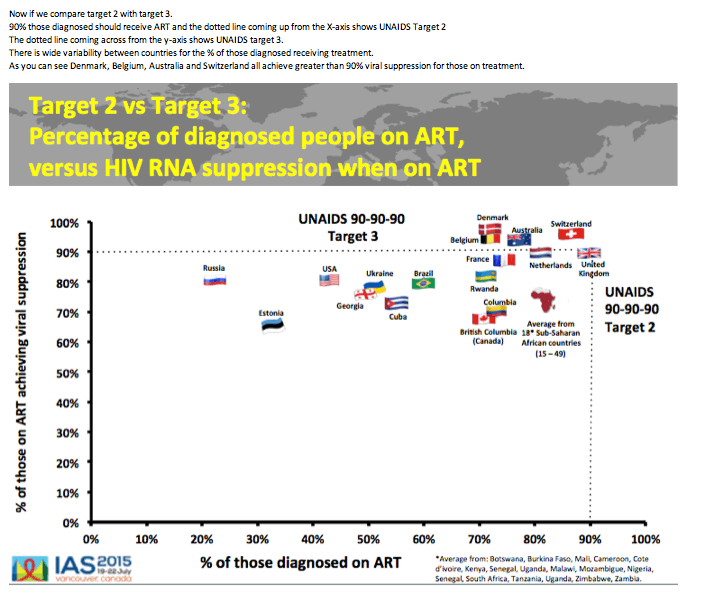
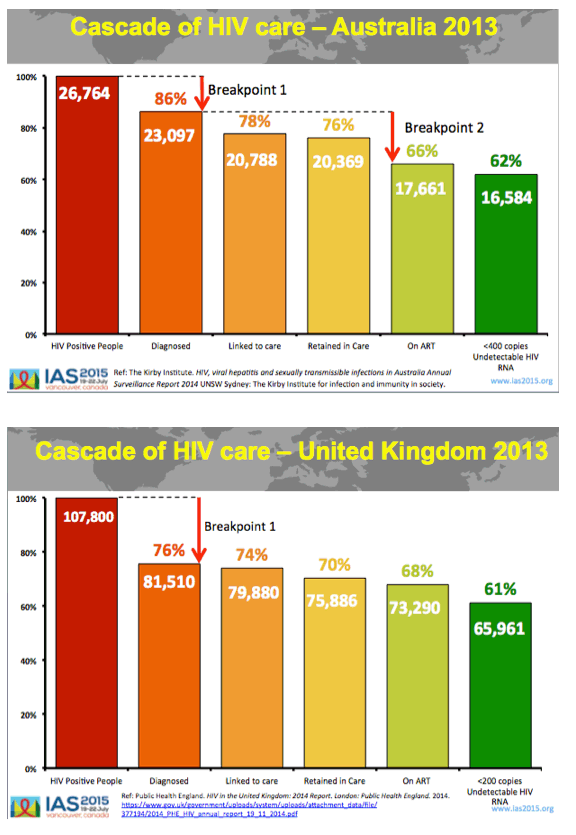
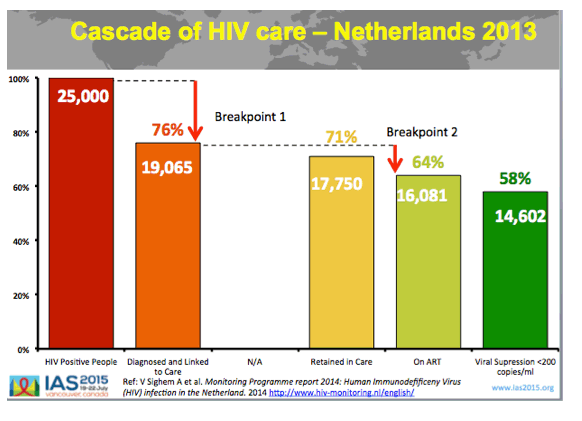
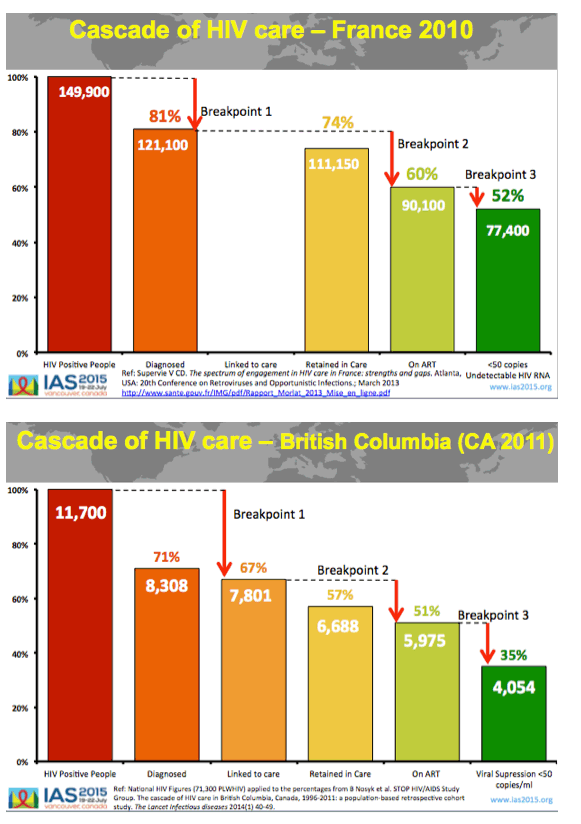
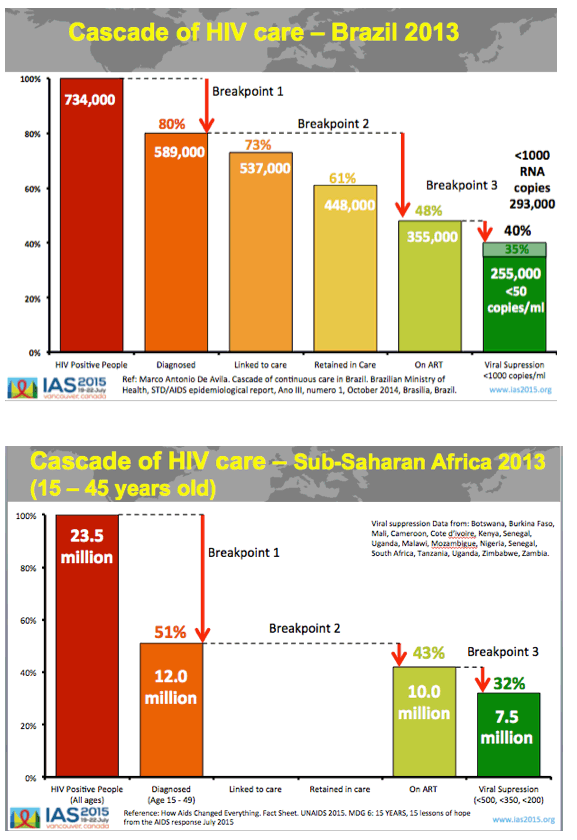

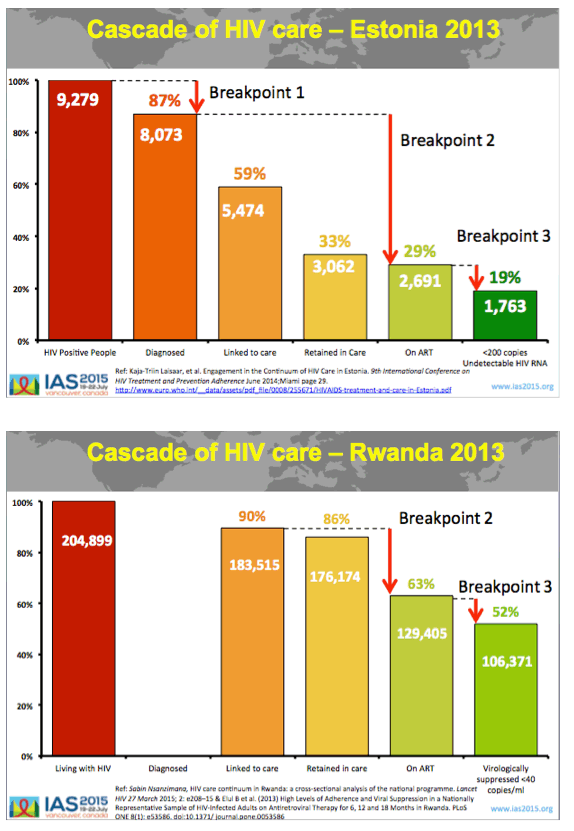
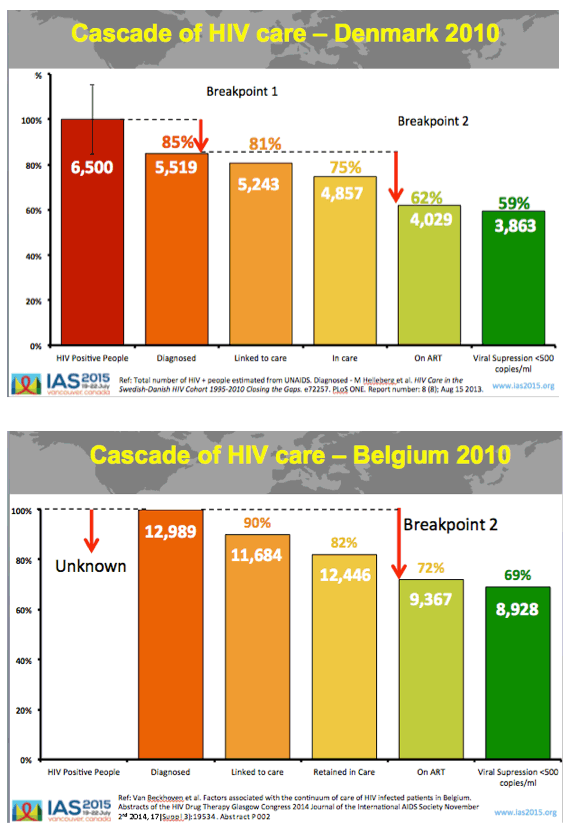

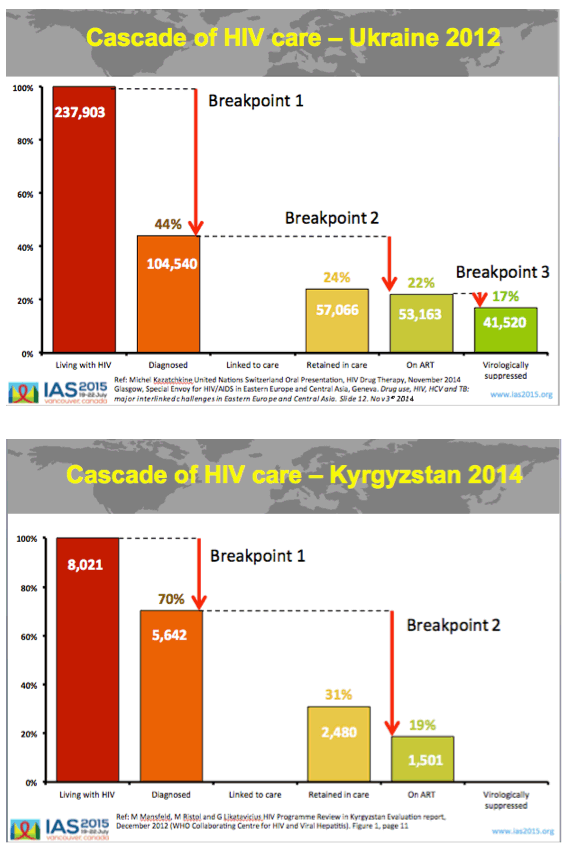
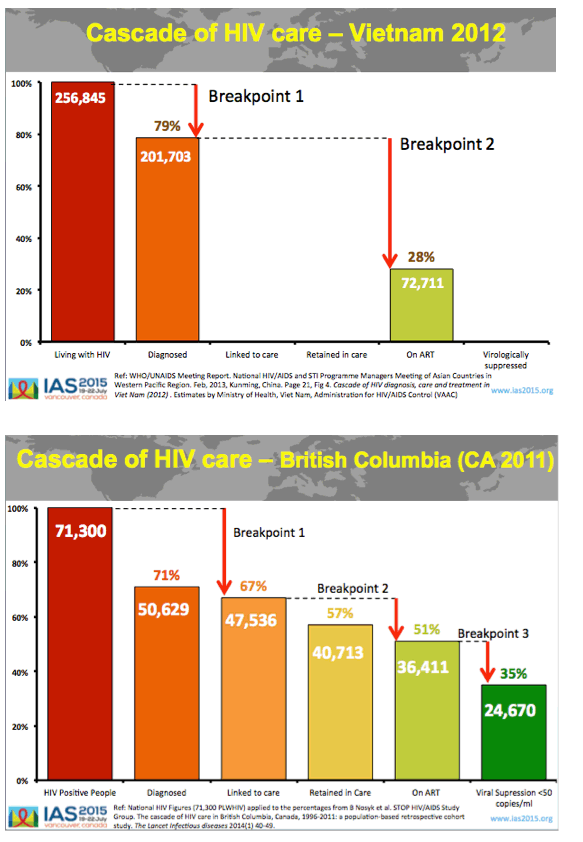
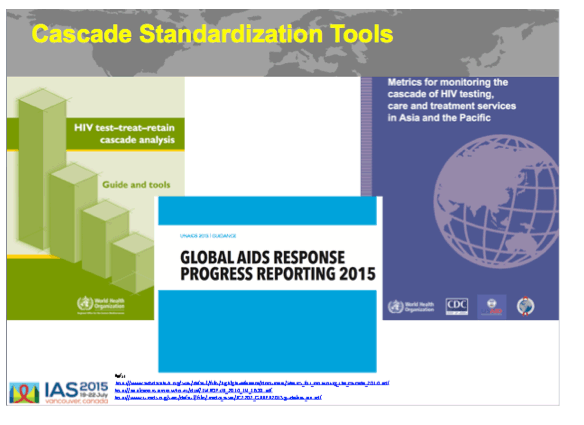
Refs:
http://www.aidsdatahub.org/sites/default/files/highlight-reference/document/Metrics_for_monitoring_the_cascade_2014.pdf
http://applications.emro.who.int/dsaf/EMROPUB_2014_EN_1639.pdf
http://www.unaids.org/sites/default/files/media_asset/JC2702_GARPR2015guidelines_en.pdf
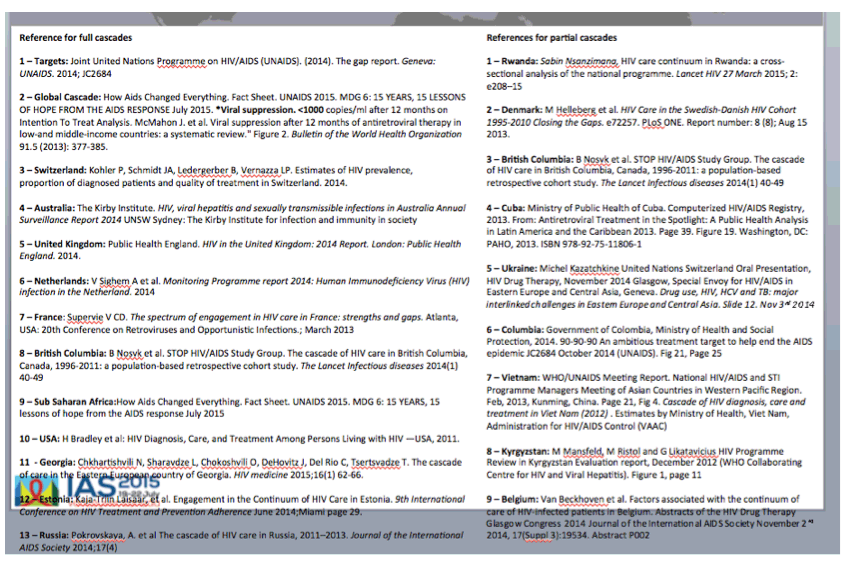
|
| |
|
 |
 |
|
|